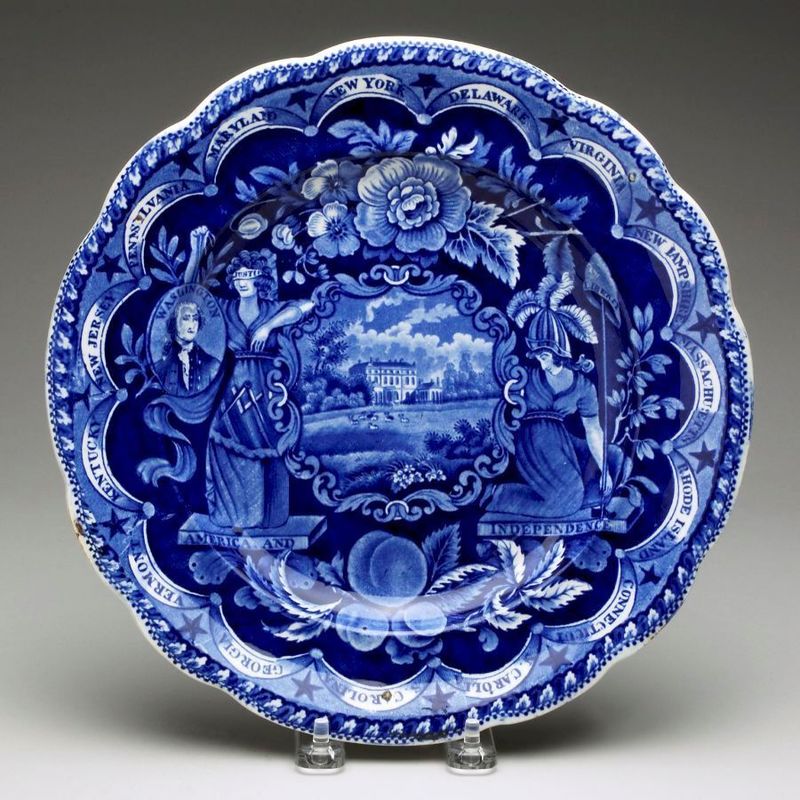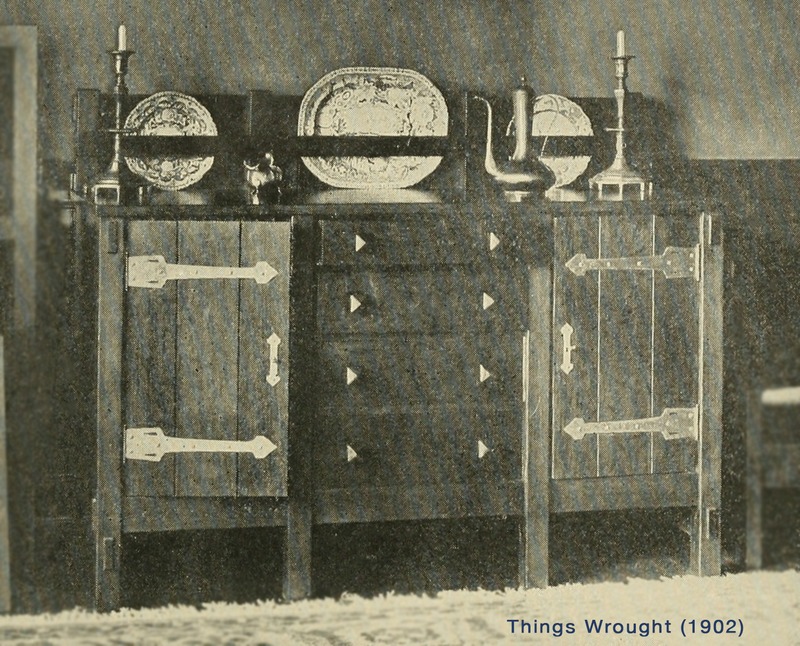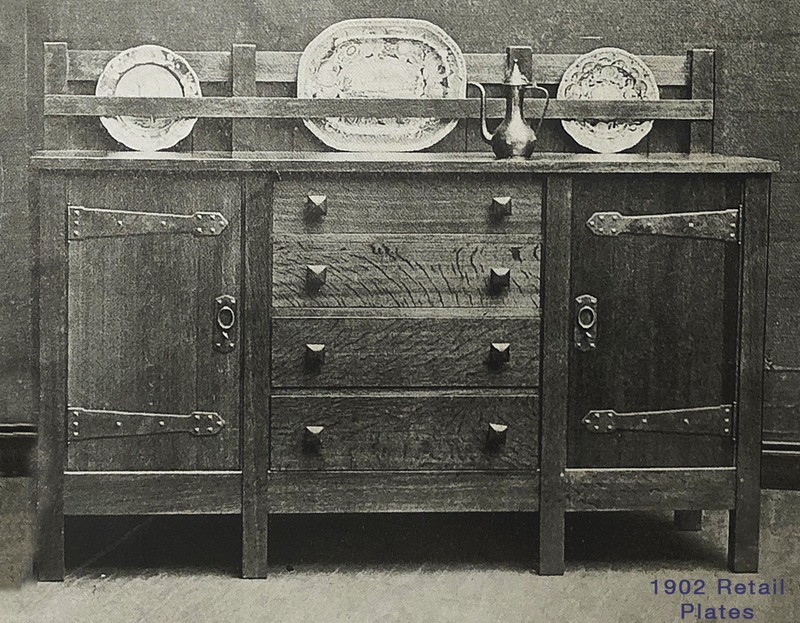Plate
Item
Title
Plate
Creator
James Clews
Date
1818-34 (ca.)
Dimensions
10 1/2 inches (d)
Medium
Transferware printed glazed stoneware
Description
Stickley's ownership of this dish–the pattern which is known today as "America and Independence"–can be traced back to at least 1901 based on images of the sideboard in his Syracuse home published in The Craftsman. Whether these were family pieces that descended to him and Eda or whether they purchased it is unknown, but clearly the plate was something Stickley liked. We might write off the decision to place it prominently on the Sideboard in Syracuse, as well as that in the Log House, as Eda's influence in an effort to preserve our idea of Stickley as an Arts and Crafts purist but would be prevented from this by the plate's appearance in promotional images for Stickley's furniture. Stickley's tastes–as I have noted elsewhere–were broad and complicated and while the presence of specific patterns of 19th century transferware in the Log House is something we have only recently identified, its presence is not entirely unexpected given the wealth of objects from different eras he owned and covered in The Craftsman.
The plate itself is English but made for the American market and a bit of a curious design. First issued at a time when Americans counted twenty states in our union it celebrates our independence by listing the thirteen original colonies, but also includes Vermont (1791) and Kentucky (1792). Personifications of Justice and Liberty flank a central medallion showing a building, the identity of which is not immediately clear. Justice, who is blind, holds up a portrait of Washington instead of her usual scales and, perhaps to reiterate the connection between Washington and Justice, wears a Masonic apron.
The plate itself is English but made for the American market and a bit of a curious design. First issued at a time when Americans counted twenty states in our union it celebrates our independence by listing the thirteen original colonies, but also includes Vermont (1791) and Kentucky (1792). Personifications of Justice and Liberty flank a central medallion showing a building, the identity of which is not immediately clear. Justice, who is blind, holds up a portrait of Washington instead of her usual scales and, perhaps to reiterate the connection between Washington and Justice, wears a Masonic apron.


